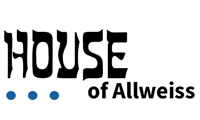Management did not give me the cream of the engineering crop. They felt (and rightly so) that the future of the plant was tied to the B6900, and they wanted the best, most experienced CPU designers on that project. So who did I get? New hires who were not proven, older guys who might be a little slower than Bob Leamy or Gary Beck wanted. Cas Pencak’s Input/Output controller, or HCP, was my first problem child. Cas was a new hire with a good resume in the circuits area, not CPU design. The B6900 group had an overabundance of circuits’ guys, so they gave me Cas. Cas’ first block diagram had some serious problems. Cas decided to implement the HCP with discrete logic. As a result he was well over his budget for circuit cards, which was two. On the other hand Dave Matty, also a new hire, had developed a very innovative state machine design for the PC, which resulted in a single card design. I asked Cas to work with Dave for a new HCP design. Cas was upset, and was a bit defensive, but I told him that my only goal was a design that would work and meet our cost and performance goals. If he wanted to work on my team he had to be willing to do whatever it took, including working with a new hire who had some innovative ideas.
I had other design challenges with the team, but I was able to get the engineers to work together to buttress weaknesses while exploiting strengths. However, I could tell my team was suffering from somewhat of an inferiority complex because the plant was focused on the B6900. Bill Ellis, who headed up the E-mode firmware development team (which was smaller), was having the same problem. I got together will Bill and I suggested we have the next design review at the Aliso Creek golf club, a beautiful setting down in Laguna Beach. Now off-site design reviews were common, usually at the local Holiday Inn, not in Laguna Beach. I thought a nicer setting would boost the moral of the B5900 troops. Bill Elis agreed but was skeptical it would be approved. I called Aliso Creek, and negotiated a good conference rate, not much more that the Holiday Inn. Then I went to go see Erv. Now Erv was known as a tough, no nonsense guy, so anyone who knew my plan expected it to be rejected by Erv. They were wrong. Erv approved it without question. Later he told me he knew what I was trying to do, improve the moral of my team, and he thought it was a great idea.
The Aliso Creek design meeting was a great success; we solved a lot of problems and finalized the way the firmware, software, and hardware groups would work together.
After that meeting my engineers dove into the detail design process. We had 14 large circuit cards to design in a little over three months. I was the section manager for the B5900, and usually managers did not do detail logic design. But I was under staffed, so I designed the DP. Ron Tucker and Ron Delaura both talked to me about doing the design. Their point was I should not be doing it. I needed to concentrate on management. I told them both the same thing; without more engineers we would not make the schedule. I would work late in the afternoon and evening on the DP. Since it was similar to what I had done at MIT I could develop it quickly. Finally, being in the middle of the actual design I could detect problems with the other designers more quickly and head them off. They relented, and I designed the DP.
About two months into the design process I could see Dave Matty was struggling. I talked to him about it, and it became clear to me that, while he was an innovative designer, he did not have the practical implementation experience some of the other engineers did. He was having trouble translating a really clever design into an actual implementation in hardware. A couple weeks later, in early October 1978, Dave came into my office to tell me he was quitting Burroughs to go back to school starting January 1979 to get his masters degree. I was in shock. I told Dave that we were in the middle of the design and needed him. Dave said he was basically done, and just transcribing the design for the Design Automation group, but I knew that was not completely true. Dave had run into several roadblocks, he was beginning to panic, could he finish this design? He had an opportunity to go to graduate school on a scholarship, so I think he took the path of least resistance.


